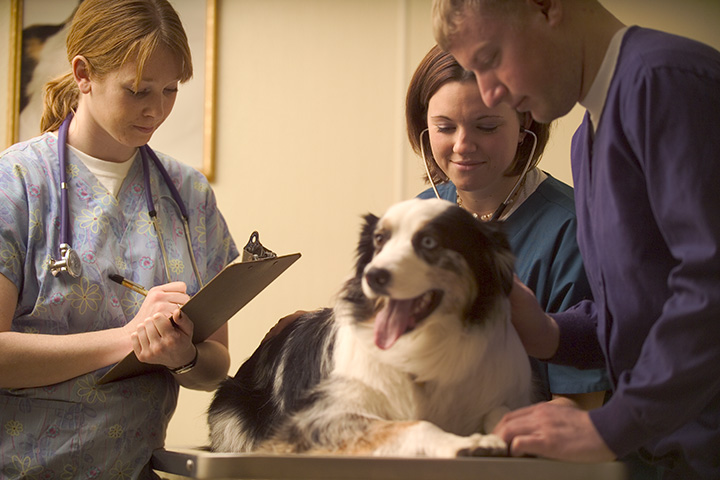A doctor’s appointment can bring out just about anyone’s anxious side. If shots, cold exam tables, and being poked and prodded are enough to stress you out, consider how they make your pet feel. It’s no wonder pets become skittish at the sight of the vet’s office. Fortunately, you can try a few basic steps to help ease your pet’s vet-related stress. Here’s where to start.
1. Stay calm
Animals are highly intuitive, and because your pets look to you for safety and security, your mood can affect their disposition more than you might expect. While this may only go so far for a pet who is especially fearful of the vet, setting a relaxed and controlled example can take a bit of the edge off. Once you’ve established a trusting relationship with your vet, authentic positive exchanges can help create an air of calm. Talk to your pet in a soothing voice throughout the visit and give them a reassuring stroke or neck scratch when possible.
2. Make sure your pet is used to being handled
It’s no secret that pets need proper socialization for a healthy and rich life. Well-socialized dogs can be a great fit for dog park trips to further expand their comfort zone and help them be more at ease in a variety of scenarios (including in the vet waiting room!). Of course, one important part of socializing is ensuring your pet becomes comfortable with handling.
Especially with young puppies and kittens, it’s important to acclimate them to gentle touch (for example, on their paws, tails, ears, or tummies). However, respecting your pet’s response signals and body language is equally as important as they adapt to being handled. For example, cats’ stomachs are particularly sensitive to touch, and some cats don’t enjoy belly rubs in this vulnerable region. Even so, as long as your pet is reasonably receptive to it, you may choose to gradually incorporate handling at home that mimics what they may experience during a typical vet visit.
Finally, if your pet will be transported to and from the vet in a carrier instead of on a leash, getting them used to the carrier is an important part of preparing them for the experience.
3. Surround them with the things they love
Make an effort to help your pet create positive associations with the vet. Bookend vet visits with a rollicking play session with their favorite toys. This can help wear them out and lift their spirits before and after the exam. Before you leave, help your pet feel secure by slipping them into a Thundershirt (though this may need to come off during the exam), spraying their belongings and surrounding areas with a specially formulated pheromone spray for dogs or cats, or outfitting their carrier with a favorite blanket or stuffed toy. Bring their favorite treats to offer during the visit.
4. Minimize waiting room stress
Be prepared to encounter other animals in the waiting area upon arrival. Some pets might enjoy the opportunity to interact with fellow animals, but be mindful that this could be stressful for other pets whose anxiety levels are elevated in the vet environment. Dogs who are not used to cats could have a negative reaction to feline patients, and cats who are not used to dogs may hiss or become reactive around their canine counterparts, affirming the experience as something to be stressed instead of shaken off. If this applies to your animal, search for a cat-only or dog-only vet office or simply request to wait in a separate area. You may also choose to cover your cat’s carrier with a blanket or walk your leashed dog outside the waiting area until you’re called into the exam room.
